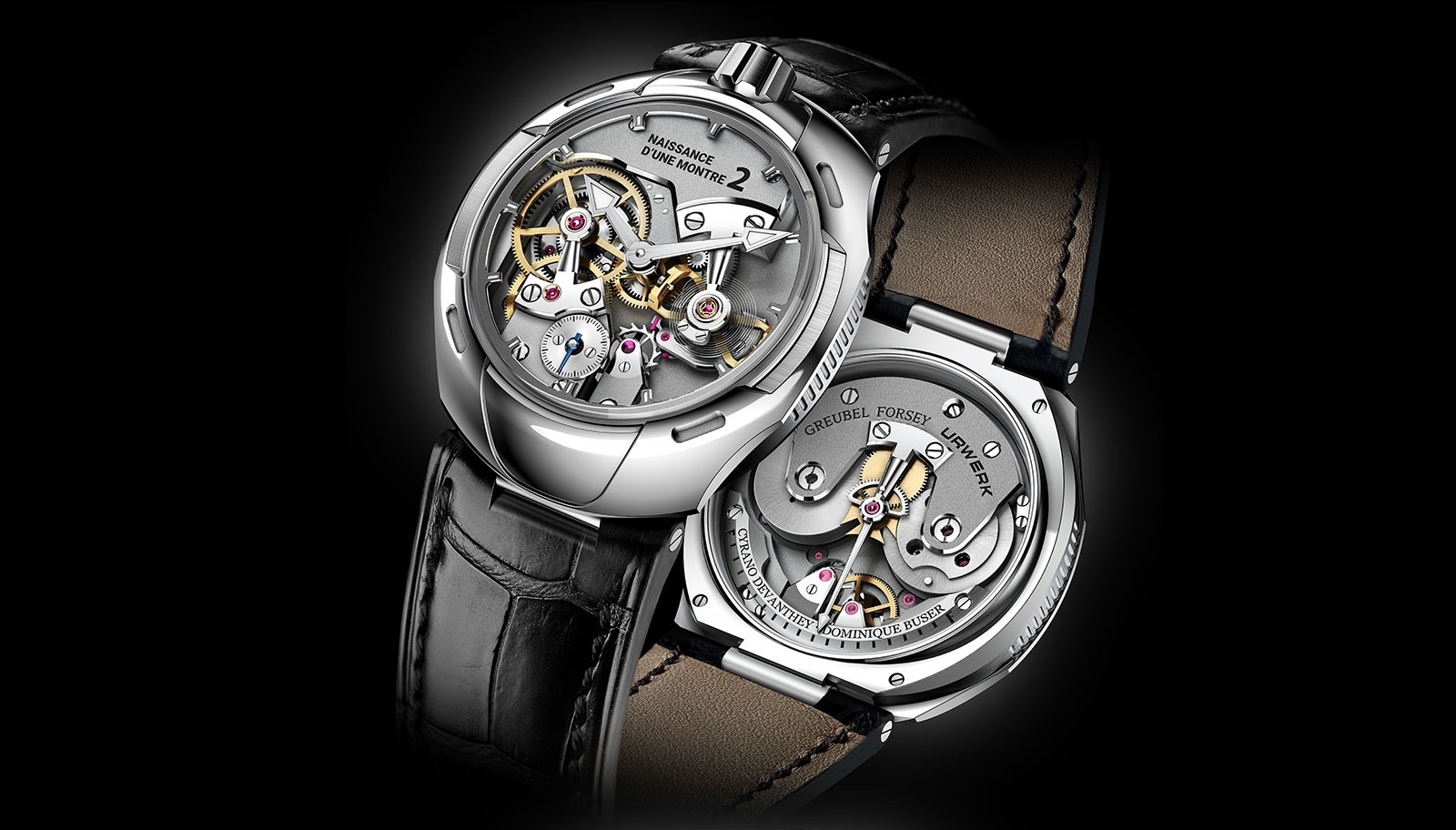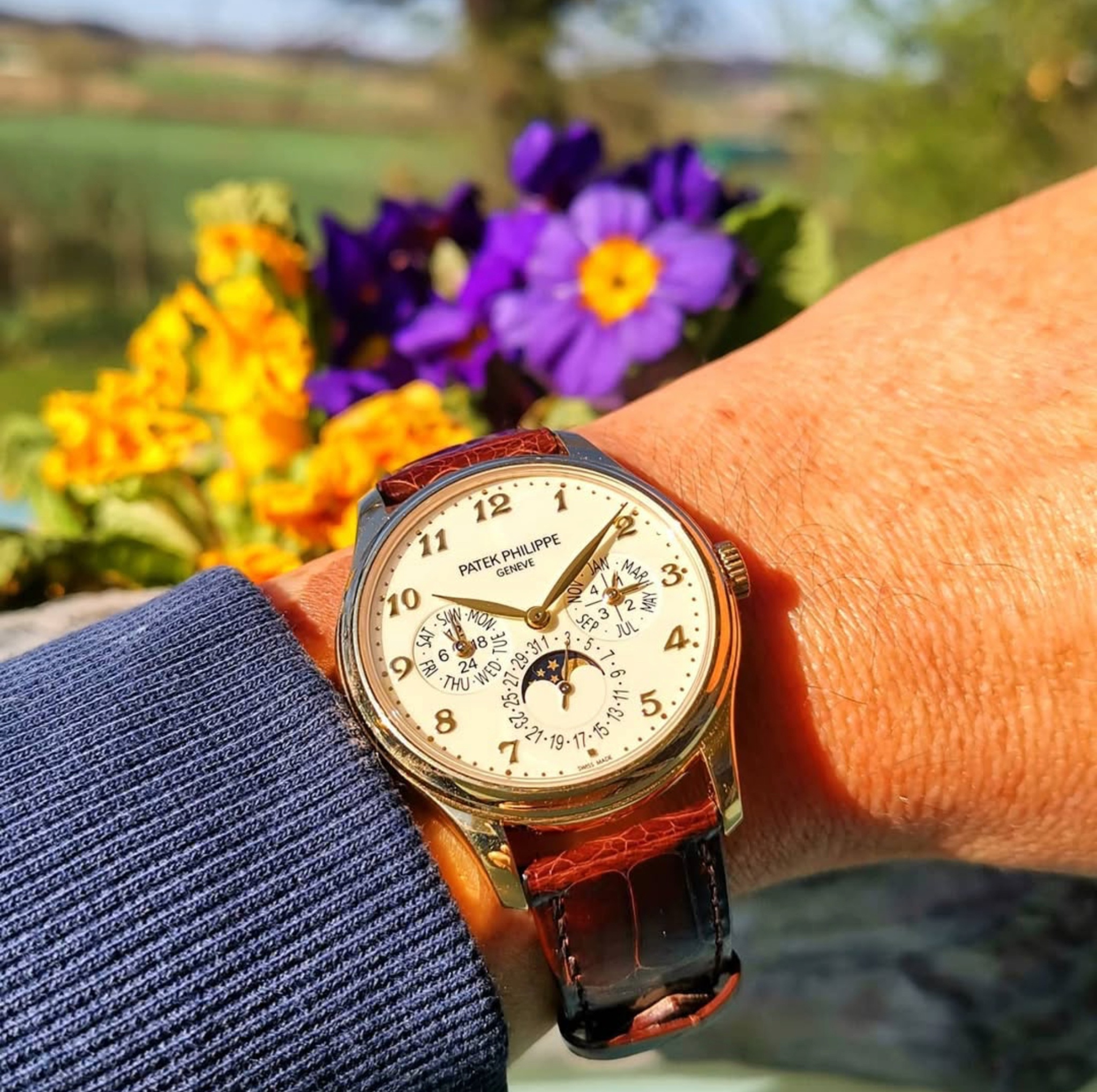
Manual Watchmaking: A Lost Concept; And An Introduction to the Time Aeon Foundation
patrick_y


Moderator Patrick_y looks at the current offering of watches on the market and sees a troubling trend that he identifies as the tragedy of mass manufacturing. Increasing industrialization of the Swiss watch industry and the massive scale of automation has increased watchmaking efficiency more than ten-fold. But how does this "advancement" hurt the artistry behind watchmaking?




Miki Eleta's Hammock Clock. This clock was made completely with no computers at all. Save a calculator. Mister Eleta doesn't even like to use a computer - he doesn't even like to use a smartphone! No CAD, no CNC, all made by hand using very traditional techniques!

My favorite Urwerk!

MB&F's HM 3. It's a lady's watch, but Hoot Hoot! What a cool watch! What a concept! This watch took a lot of out-of-the-box thinking!

A First World Problem Identified
When I see the landscape of watch products; I see a troubling trend. More and more watches are made in assembly lines and fewer and fewer watches are made by individuals who have a wide breadth of talents. Outside of smaller independent brands (like Greubel Forsey, Urwerk, and MB&F), Lange, and Montblanc Villeret, where the entire watch movement is made mostly by one or two people who take pride and responsibility for the end product; the vast majority of products on offer are made by a plethora of over a dozen people. Even at the famous upper-echelon brands such as Audemars Piguet, Patek Philippe, and Vacheron Constantin, most movements are made in an assembly line where a dozen people each graft on modules to the manipulate. Imagining building a complex LEGO toy where you are always building just one small portion over and over again and not allowed to make the whole thing... Any child with creative talent would eventually say, "I'm tired of building just the panda's tail, I want to build the whole panda!" Keeping workers tasked into building one small part repeatedly is great for efficiency, but it comes at a high cost - it ruins creativity! We watch collectors consider watches an art form - and you don't need a Masters in Fine Art to know that creativity is a key ingredient in art!
Some Context
Mass production started when humankind perfected assembly line operations. This meant standardized parts needed to be precisely made - and these parts were so identical, they could be used interchangeably. Early examples of mass production include fire-arms (standardized barrels, triggers, strikers) with the "Brown Bess British Musket" in the 18th century, a standardized rifle used by British military. In the 20th century, Henry Ford started to build automobiles by assembly line - automobiles were previously made individually in an artisan process.
Before we had part commonality and part standardization, we had individually made parts that were all made by one master craftsman. But this product could only be repaired by that same craftsman. And since each product was artisan-made, these products became expensive. The products were incredible, unique, exclusive, and often beautifully made. But difficult to repair, impractically expensive, and difficult to recreate.
Part standardization meant that products could be made in assembly lines. Watches, automobiles, and other mechanical devices were all once artisan-made products and could now be made en masse thanks to part standardization. After all, efficiency is a great driver of business.
When it came to watches; watchmakers were relatively well versed on how watches were made thanks to schooling that taught all the fundamentals of how to make watches; many watchmakers could make a watch from beginning to end. This started to change in the 1970s. The quartz crisis required the Swiss watch industry to pivot and achieve new standards of efficiency. Watchmaking became more specialized. Watch schools also had to teach 3D modeling, CAD (Computer aided design), CNC Machine operation, and more. Soon, more and more workers became highly specialized in one aspect of production.
While this newfound efficiency saved the Swiss watch industry from the quartz crisis, a large part of the identity behind Swiss watchmaking was lost. Today, the big employers have employees specialize in one specific task for efficiency and mastery; whereas in the past, one individual had the skillset to make a large portion of the watch. Small employers and independents have watchmakers that do a wide breadth of tasks.
There are positives here too. Mass manufacturing ensures a quality product and a repeatable process. Our watches are also much more accurate thanks to this process. In the 1800s, Breguet's watches would cost thousands of Francs back in those days, or as much as a modest chateau - so mass production has also brought down the price of watches. Identical products also means identical faults and failures; so troubleshooting problems is a more streamlined and consistent process.
The Time Aeon Foundation
The Time Aeon Foundation has been conscious about this post quartz crisis phenomenon and was founded partly to bring back and preserve traditional watchmaking crafts, many which have been nearly lost. The Time Aeon Foundation also runs a project called Naissance D'Une Montre, French for Birth of One Watch. These project timepieces, which are naturally truly exquisite, hi light traditional watchmaking using traditional manufacturing techniques. The only use of a computer is in the CAD process (computer aided design) but no computers are used in the manufacturing process at all. The manufacturing process is sometimes extremely challenging, as a lot of the century-old machines, lathes, are no longer used by the industry and have been discarded or have not been maintained. Since almost all the major brands are using CNC machines and modern machines, these older machines have been gathering dust, not being maintained, not being calibrated. Finding these old machines and reviving them to working order was a painstaking process, then learning how to use them was certainly a blast from the past.
Please take a look at these amazing Naissance D'Une Montre timepieces:
Version 1; Michel Boulanger, Philippe Dufour, and Greubel Forsey design. Eleven pieces were made and sold to collectors, the proceeds help fund the operations of the Time Aeon foundation. https://timeaeon.org/projects/naissance-dune-montre

Version 2; Felix Baumgartner and Martin Frei team up with watchmakers Dominique Buser and Cyrano Devanthey to make a modern-looking watch with techniques that could've been achieved a century ago. Only one example exists. https://timeaeon.org/projects/naissance-dune-montre-2

Notice the balance wheel doesn't have a full circular wheel, but four spokes. So cool.
Here are two videos, while they are produced by an auction house, they illustrate some of the process behind the creation of this watch.
Version 3; Ferdinand Berthoud, the centuries-old brand owned by Karl-Freidrich Scheufele, promises to delight us with an incredible timepiece. While it has not been introduced, I eagerly await its debut!
Conclusion
We should certainly get excited if we see a watch that we like, that looks great on our wrist, and that we want to wear. Regardless of the price point and regardless if it was made on an assembly line or at one individual's workbench from start to finish. I own regular production watches; they're accurate, they're great, they work! I enjoy my regular production watches immensely.
However, after owning multiple "normal" watches, you may decide that you want something really artisan-made one day.
If you look at watchmaking as an art form, and you want watches that are fairly original or at least watches that aren't pure commodities, or watches made using old-world computer-less techniques, then keep an eye out for something special. You may have to look hard. You may have to look deep. You may even have to look under rocks. But, taking that path less traveled may make all the difference. Good luck!
Please comment; what are some of your favorite timepieces that are regularly produced and what are some of your favorite timepieces that are truly special works of art?
At the risk of appearing less than original - I enjoy the Patek Philippe Nautilus - especially the 5712/1A with the 240 caliber! I like micro-rotor automatic movements.
But for a true work of horological art, I really like unique objects like Miki Eleta's clocks, Urwerk's amazing watches, and MB&F's horological art pieces!

Miki Eleta's Hammock Clock. This clock was made completely with no computers at all. Save a calculator. Mister Eleta doesn't even like to use a computer - he doesn't even like to use a smartphone! No CAD, no CNC, all made by hand using very traditional techniques!

My favorite Urwerk!

MB&F's HM 3. It's a lady's watch, but Hoot Hoot! What a cool watch! What a concept! This watch took a lot of out-of-the-box thinking!
Comments:

AuHavrePro March 25th, 2025-03:54
What an excellent and substantive post. This subject matter is perpetually swirling around in my brain. As in, do I really want a 'regular' Reverso or Overseas as opposed to a completely hand-finished tourbillon etc. version; and then of course we have the Urwerks and Berthouds of the world.......

patrick_y March 25th, 2025-04:08
It's some heavy reading! For a heavy topic, I did try to keep it to around 1000 words. I really really like simple watches. Sometimes having a bunch of sub dials on the watch doesn't necessarily contribute to a higher elegance. Sometimes less is more. And I'm finding plenty of ve...
mdg March 25th, 2025-04:23
Great stuff as always... ... Ferdinand Berthoud has fascinated me since they started. I need to keep playing the lottery...

patrick_y March 25th, 2025-19:01
I'd acquire a Ferdinand Berthoud! They're a little big for my wrist though - might need to wait until they come out with a smaller version.
mdg March 25th, 2025-21:56
I know they are big... ...but I think I could pull it off. Have never seen one live though...


Ichiran March 25th, 2025-06:03
Thanks for the thought provoking thread I enjoyed it and am currently waiting for a few artisanal watches from Switzerland. This could take a few years but I'm happy to wait for them while enjoying those that I already own. I do wear my other regular mass-produced watches occasionally but the a...

patrick_y March 25th, 2025-19:05
Thank YOU for reading and having your thoughts provoked! Most of us collect watches for fun, but we don't really think about it in detail all that much. I'm glad that you read this article and gave it some thought! Good luck on your new watches to be! I hope they come soon! I can't say I wear artisan watches 95...

quattro March 25th, 2025-06:29
Thank you Patrick for this in depth analysis of the evolution of watchmaking. The only thing I would maybe add is that, among regular production watches, I tend to see some significant differences between the more industrial ones (like my regular Alpine Eagle) and the ones which have a certain level...

AuHavrePro March 25th, 2025-17:52
That is a beautiful watch Emmanuel. I don't think anyone else here has one, I appreciate your images!
0-10-10
Load More Comments
Next Article

quattro


Patek Philippe Perpetual Calendar ref. 5327
quattro


Introduced in 2016 , Patek Philippe's Perpetual Calendar ref. 5327 has a 39 x 9,71 mm case and is powered by micro rotor caliber 240 Q. Leaf hands , Breguet numerals , scalloped lugs ... many elements should make it popular and sought after, but it doesn't seem to get all the love it could (should?) get.
© 2017 - WatchProZine